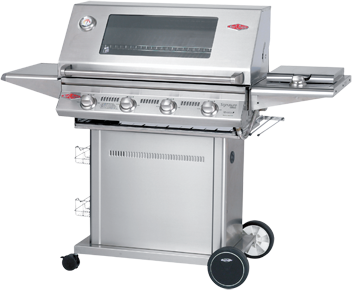 Spring is here, and warm weather will be approaching, we promise! This time of year the grill starts to call to us. Cooking on a new gas grill at the start of spring gives you the opportunity to spend some relaxing time outdoors after the long hard winter. It also makes it easy to cook and clean up while enjoying time with family and friends. Plus, the flavor outdoor grilling gives to food is like no other. Just the aroma wafting from a neighbor’s grill can shift the salivary glands into overdrive.
Spring is here, and warm weather will be approaching, we promise! This time of year the grill starts to call to us. Cooking on a new gas grill at the start of spring gives you the opportunity to spend some relaxing time outdoors after the long hard winter. It also makes it easy to cook and clean up while enjoying time with family and friends. Plus, the flavor outdoor grilling gives to food is like no other. Just the aroma wafting from a neighbor’s grill can shift the salivary glands into overdrive.
Unlike barbecue, grilling is a hot and fast. The food is cooked over direct heat to create the characteristic grilled flavor.
Steven Raichlen, grilling cookbook author said, “Grilling is very fun and theatrical to do. It’s the performance art of the culinary world. And I think it is the best method of cooking for most foods, from seafood, meats and vegetables to even desserts.”
One of the biggest debates in the grilling world is whether to use gas or charcoal. Gas grills are the most convenient way to grill. The flame is instantaneous and easily adjustable. Plus, it is clean—no black charcoal grime on your hands and no ashes to clean up later. Gas is perfect for cooking at short notice or after a long day at work.
Charcoal grills generate more heat than gas, which increases the grilled flavor of the food. It is easier to smoke foods over charcoal and you get a more intense smoke flavor. And charcoal grills typically cost less than their gas counterpart.
Still, it is harder to control the temperature of charcoal. The coals take time to heat up and more may be needed for longer cooking times. The answer for most of the chefs is to own both a gas and a charcoal grill for any grilling situation.
Here are some of the grilling tips for the start of the grill season:
- Do not have your grill heated to one single temperature. Ideally you will have a hot side and a cooler side. For a charcoal grill, this means banking the majority of the coals to one side.
- Learn to check the grill’s temperature with the hand method. Hold your hand over the fire and count (one Mississippi, two Mississippi, etc.) Two to three seconds is a hot, high fire; four to five is medium-high; six to eight is medium; 9 to 10 is medium-low; and eleven to fourteen is low.
- Before using, get the grate hot, brush it clean with a wire grill brush, and lubricate the grate with oil (a paper towel wad and tongs do the trick) just before you add the food.
- Do not use water to tame flare-ups. Just move the food to a different area on the grill until the flames subside.
- Do not put too much food on the grill at once. There should be room to maneuver, whether it is to avoid a flame-up or to slow down the cooking if the temperature is too high in one area.
- Put barbecue sauce on at the end to prevent burning.
- Be sure to have the tools you need—long, spring-loaded tongs and a long-handled spatula. The tools should not be too heavy and fit well in your hand. An instant read thermometer and a timer are also useful tools.
- Over-turning can be a problem, especially with something as delicate as fish. Figure out the approximate cooking time and then turn the food once halfway through.
- When you remove meat from the grill, the internal temperature will continue to rise as it rests. By the time you eat, the meat could be overcooked. Try removing the meat while it is just under the desired temperature by five to ten degrees.
For information on our pre-season grill sale, contact West Sport in Sudbury.
cjonline.com

Comments
{tag_commentlist}